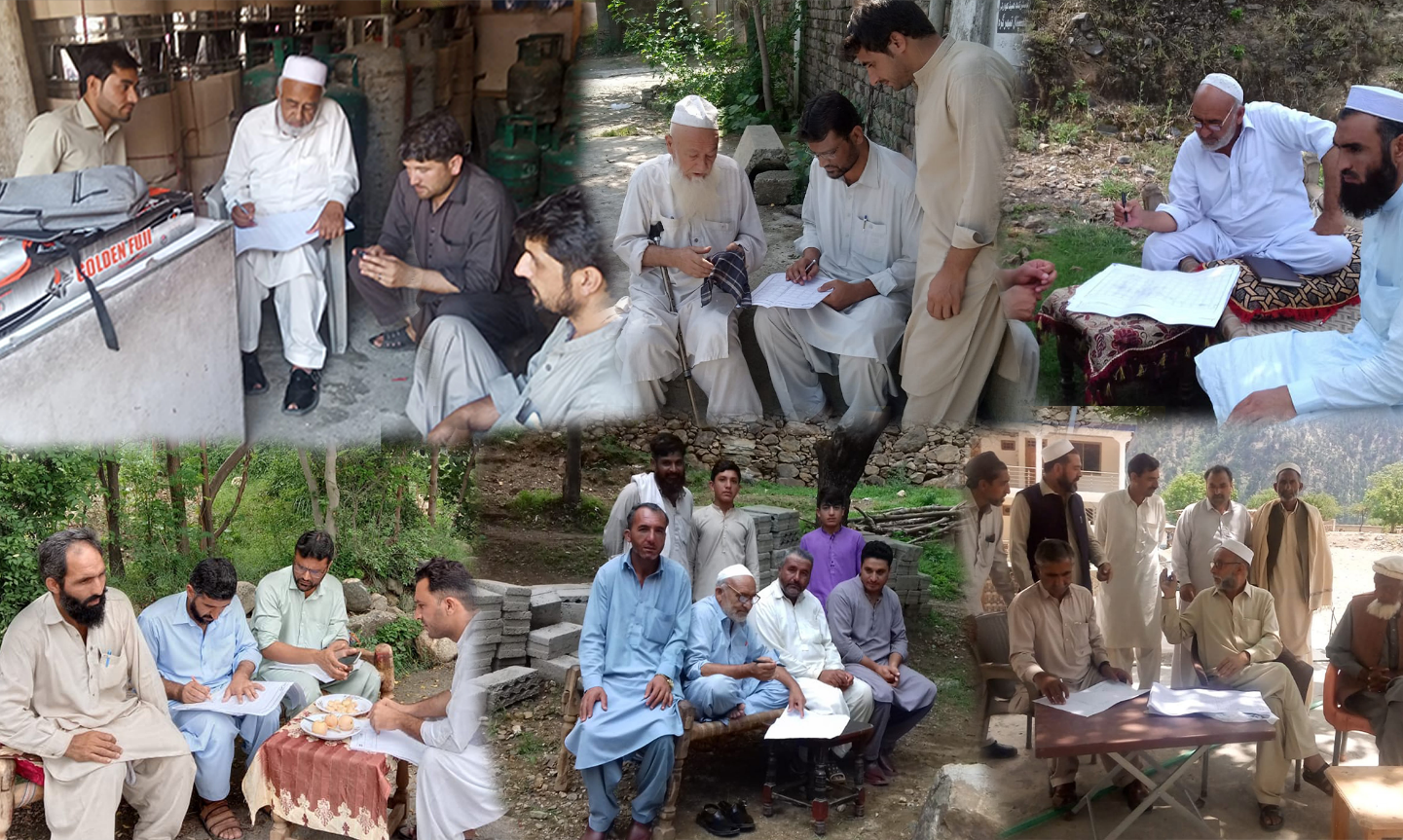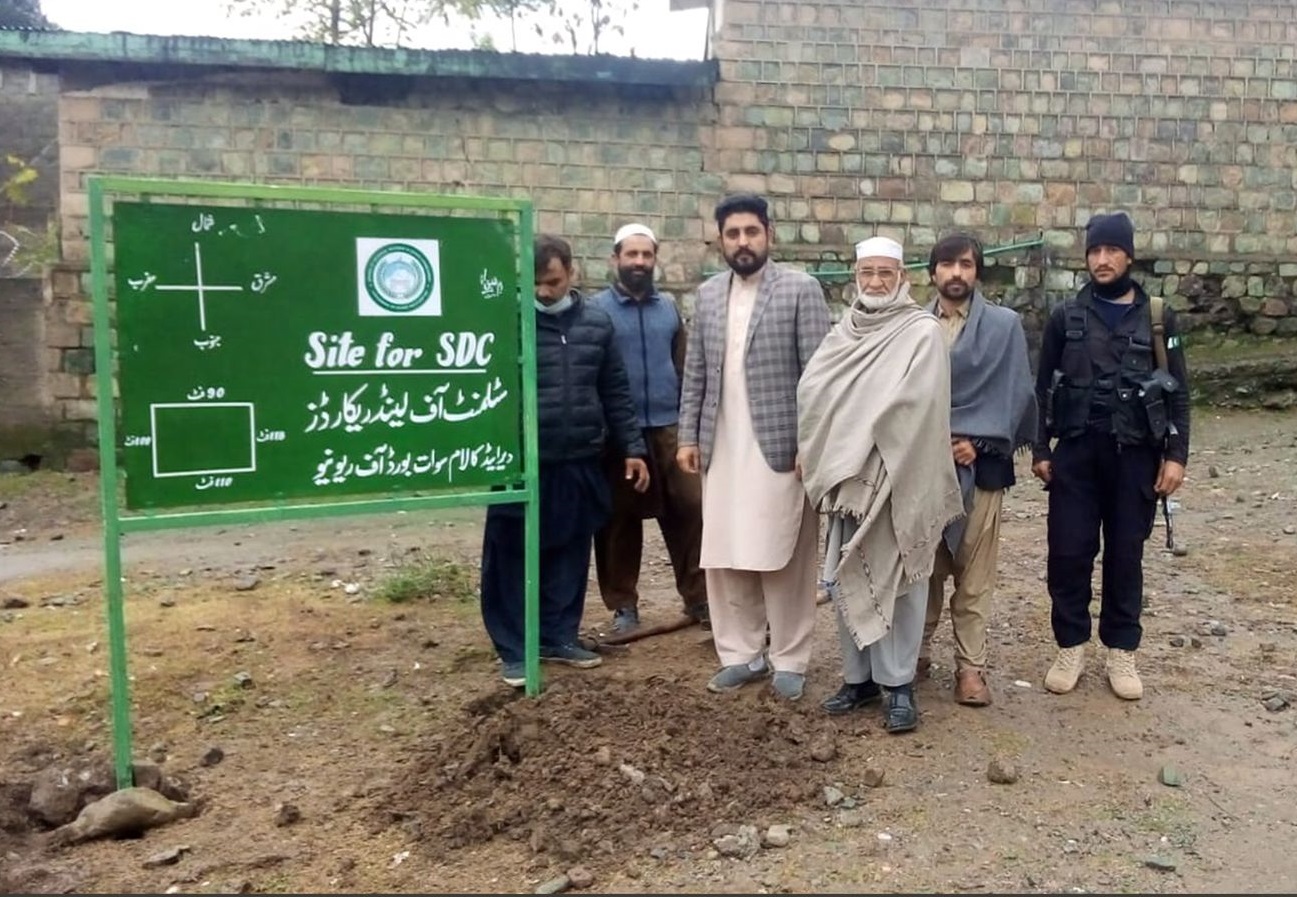One of the foremost and fundamental pre-requisites for any Land Settlement operation is reaching out the Public at large of the intended Settlement area. Historically, the only mode of reaching out the public was through conducting local meetings and jirgas. In the Project of Settlement of Land Records in Districts Dir Lower, Dir Upper and Tehsil Kalam (Swat) a multi-dimensional strategy of reaching out the public has been adopted. The various modes applied to engage the public include Social Media, Print Media, and Electronic Media. Moreover, various pamphlets and Broachers in printed format were also distributed for the said purpose. Local seminars, meetings and jirgas have also been held with members of civil society, local elders, trade unions, elected representatives and local Ulemas. In each gathering an exhaustive question answer session has been arranged to remove the doubts, queries and fears of the local community. Local Ulemas have been requested to sensitize the community about the entries of females in the relevant Settlement documents.
Apart from major gatherings at district and tehsil levels the Settlement officials have also been tasked to visit each Village council and hold meetings with the local community. This activity has borne fruits. As a result of this gross root level approach the Tak Bast has also been completed. And most of the reservations of the local community have been removed then and there.
The project area does not cater fully for the livelihood opportunities due to its rugged terrain and lack of industry. Therefore, some people of the local community are earning their livelihood either in other parts of the country or in oversea countries. However, their ownership and their stakes in the land of the project area cannot be negated. In order to engage them the forum of social media has been utilized to the optimum. Dir Overseas Pakistanis Association (DOPA) has been actively engaged since start of the project. Live sessions have also been held with DOPA.
Apart from the local community various government departments present in the project area have also an important role to play. As all the land owned by different government departments need to be incorporated in the settlement documents. For this purpose, the district administration in the project area, the line departments, Provincial Departments and the Federal Departments have also been engaged. Various meetings have been held with them, whereby, they have been briefed about the Settlement process, the role expected of them and the data needed from their side for the requisite entries in the Settlement records. In this regard, some of the departments
have responded positively by sharing the requisite data while others are consistently being pursued to do the needful.
Thak Bast is the first practical step of settlement operation. It is the process of drawing a rough sketch of a revenue estate (Mouza). A revenue estate is the basic unit in settlement. In simple words a revenue estate may comprise of one or more villages. The delimitation of a revenue estate is usually based on natural barriers like mountains, rivers or water nullas etc. However, the delimitation of a revenue estate is not limited to natural features only. Activity of Tak Bast formation is performed on ground. And it is done with the help of local elders. It does not create any exclusive title rights. It is just an operational division for settlement activities. Our field staff has completed this activity and each unit of the project area has been divided to different number of mouzas.
Shajra Nasb writing is the most important step in settlement process. It is here that bifurcation between the indigenous owners and buyers is drawn. The local established formula of division of land is also incorporated in this document. This activity is performed in the Hujras, mosques, markets and other public places. Presence of the public at large provide on ground check on making the accurate entries. Sufficient ground work has already been done during public awareness and if any queries have remained unanswered the same are addressed at this stage. Standard Shajra Nasab forms have already been printed and provided to the field staff. This Shajra Nasab document is known as Chatta Shajra Nasab. All the errors (Badrats) are removed during Partal. There is a three-layer mechanism of Partal. First, the Girdawar is supposed to carry out 100% partal. Then, Tehsildar has to double check that entries have been made correctly. And finally, Assistant Settlement Officer also carries out partal of the entries made in settlement documents. Apart from it Project Director also visits the field to cross check the work done. It may be added that all verifications and partal are done in the field. This Chatta Shajra Nasab document keep on amending till compilation of Misl e Aqiyat (Settlement Record of Rights). There is provision of taking the pedigree of the ancestors up to six stages back, however, it is not mandatory. Normally, four generation entries are made in this document.
Writing this Shajra Nasab requires expertise in the traditional revenue knowledge. This is the reason that the revenue staff hired has been a mix of the retired and fresh officials. Even though the revenue officials could have been hired much earlier but due to budgetary constraints the final appointments were stretched to the last week of June 2022. So, the progress achieved by the revenue field staff in writing the Shajra Nasab is a reflection of 100 days performance (21 June, 2022 to 30th September, 2022). It may not be out of place to mention that despite the rugged terrain, the devastating August 2022 floods in the project area, non-availability of the requisite logistic support and working at half of the sanctioned strength due to meager budget allocation the figures reflecting the number of entries, in the Shajra Nasab, made so far are worth appreciation.
Khatoni is the second most important document after Shajra Nasab. This mainly provides information about the tenant of parcel of land. This information is collected for each and every parcel in a given revenue estate. Khatoni writing starts in those mouzas where Shajra Nasab writing has been completed. Since the project is under staffed for want of funds, therefore, Settlement Field Staff could be posted in 1/6th of the total number of mouzas. Special focus has been laid on Kalam due to its inaccessibility in winter season. The four mouzas in Kalam where Shajra Nasab has been completed Khatoni Writing has also been completed. Once the issue of funds is resolved and the advertised positions filled the field activities would show visible improvement.
Since the record constructed would be computerized, therefore, the services rendered to the public need to be provided at the Service Delivery Centers. For this purpose, the Project has an inbuilt provision of constructing seven SDCs in the Project area. Four SDCs are to be constructed in Dir Lower and three in Dir Upper (one for each subdivision). The Project Director has taken up the case for identification of state land for these seven SDCs with Deputy Commissioner Dir Lower and Deputy Commissioner Dir Upper in 20/08/2021. Later on, the concerned section in Board of Revenue was also involved to direct the Deputy Commissioners concerned for identification of state land for SDCs. Deputy Commissioner Dir Upper has identified three sites (one at Dir Khas one at Sheringal and One at Wari). The same have been transferred by Provincial Government in its meeting held on 20/05/2022. Notification to this effect has been issued by Board of Revenue vide Notification No.Rev.IV/SL/SDCs/S:317/14698-711 dated 20/05/2022. Out of these three sites two have been handed over to Assistant Settlement Officer Dir Upper. Whereas the site subdivision Wari awaits its possession.
Deputy Commissioner Dir Lower has identified five sites for the four SDCs. The same have been visited by our field staff. The report of the field staff has been shared with Deputy Commissioner Dir Lower with the request to finalize four sites so that case for its transfer could be initiated with Board of Revenue. But the reply from Deputy Commissioner is still awaited. It may be added that Kalam is not a subdivision but a Tehsil of subdivision Bahrain. And there is already an SDC at Bahrain in another Project of Board of Revenue. Secondly, Kalam is inaccessible for half of the year due to severe weather and heavy snowfall so it would not be economically viable to have a full-fledged SDC at Kalam. Third, the population of Kalam is scattered and the infrastructure fragile so Kalam could not serve as a focal point for the entire Tehsil. Therefore, the Project envisages the concept of mobile SDC for Kalam.


